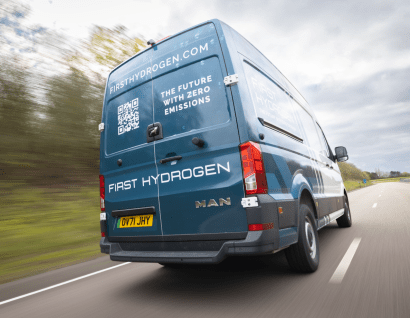
Until now First Hydrogen has predominantly targeted industries such as utilities, that require zero emission vehicles with the capability to travel further and carry heavier payloads. Parcel delivery companies face a specific set of challenges, which is encouraging them to explore other zero emissions technology in addition to battery technology to meet commercial and environmental targets.
These fleets make up the middle and final stages of the supply chain, which traditionally handle shorter journeys to transport items from local hubs directly to consumers or end users. They are increasingly undertaking longer routes from distribution centers to lockers and shops with parcel collection services or “pick up and drop off points”. With fewer stops, the locker model creates two thirds less carbon than conventional home deliveries, which could be reduced further when using greener vehicles.
A growing market
The parcel delivery vehicle market size will surpass $210 billion by 2032. The ecommerce boom continues to fuel growth of the delivery market. There are 9.1 million online retailers in the world, trading through their own ecommerce platforms or online marketplaces, and sales are predicted to reach $8.1 trillion by 2026. This retail channel contributes to the number of parcels and, as speed of delivery is crucial to service, it increases the number of delivery drivers on the roads and therefore the amount of vehicle emissions.
Hydrogen mobility and delivery
First Hydrogen’s engineers highlight that, while the vehicles were designed to sustain longer journeys, they have been equipped with hybrid engines (hydrogen fuel cell and battery), which suit shorter drives in urban and suburban areas. Regenerative braking helps to recharge the battery, particularly during journeys with lots of starts and stops, such as driving in built up areas, or routes with multiple stops – including the journeys delivery drivers make with frequent drop-offs and pick-ups. Drivers frequently make over 100 stops in a daily shift.
Fast hydrogen refueling also reduces the vehicle down-time, i.e., the time a vehicle is off the road and out of service - refueling First Hydrogen’s LCV takes approximately 5 minutes whereas charging a similar electric vehicle takes around 5 hours. This extends daily duty cycles, with the vehicles available for longer shifts across multiple drivers, which provides fleets with greater operational flexibility.
Steve Gill, CEO of First Hydrogen Automotive, comments: “Carbon reduction targets, low and zero emission zones in cities and phasing out of diesel and petrol-powered vehicles are positioning hydrogen mobility as a realistic solution to the challenges last-mile delivery operators face.
"Fleet managers are realising that battery electric vehicles alone will not provide the reliability and operational flexibility required to meet customer demands. Future fleets require a mix of BEV and FCEV to overcome these obstacles and hit net zero targets.
"The large, growing parcel delivery sector desperately needs to build environmentally friendly and commercially viable fleets, and our hydrogen LCV can help to do that. This presents us with an exciting opportunity to explore a new customer base, enabling us to further accelerate business growth and potentially bring our vehicles to market quicker.”

